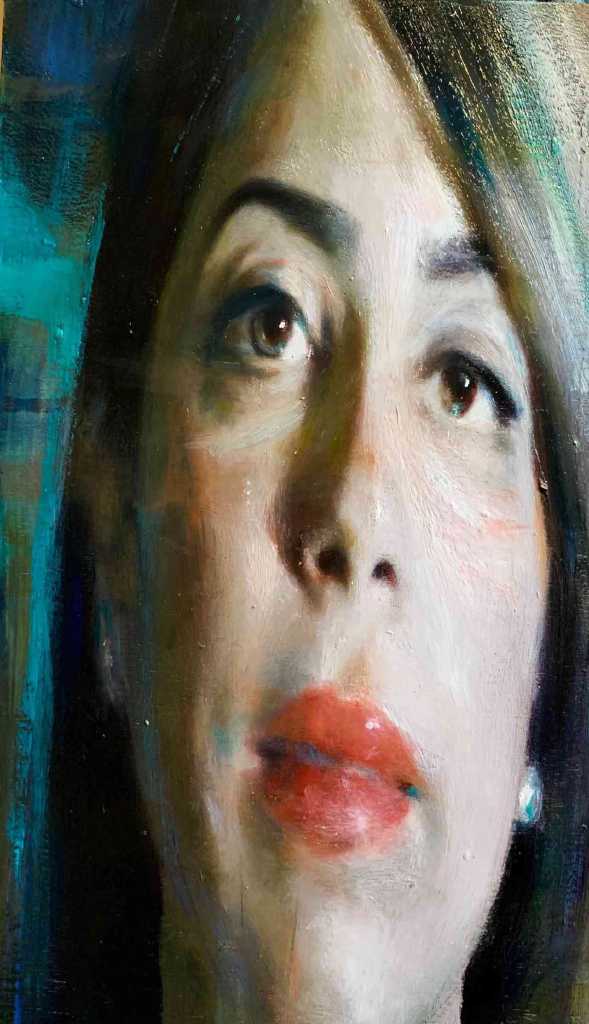Four Artists
On a new conception of beauty
7 Dec 2019 – 10 Feb 2020
Trikala
TEXT BY
Alexis Veroukas
TRANSLATION BY
Yota Dimitriou
PARTICIPANTS
George Hadoulis ·
Savvas Georgiades ·
John Kottis ·
Valli Nomidou

Giannis Kottis,
Blue bike,
oil on canvas,
110 x 80 cm,
2019
“I’ve looked on beauty so much,
that my vision overflows with it…,
…Figures of love, as my poetry desired them,
in the nights when I was young,
encountered secretly in my nights…”
Constantine P. Cavafy, “I’ve Looked So Much…”
John Kottis, Valli Nomidou, George Hadoulis and Savvas Georgiades will co-exist in a group exhibition hosted by ALMA Gallery at Trikala in December. We can ask ourselves what images have made an impression on us as this year is drawing to a close. These are, undoubtedly images of cruelty, horror and the destruction of human life and nature.
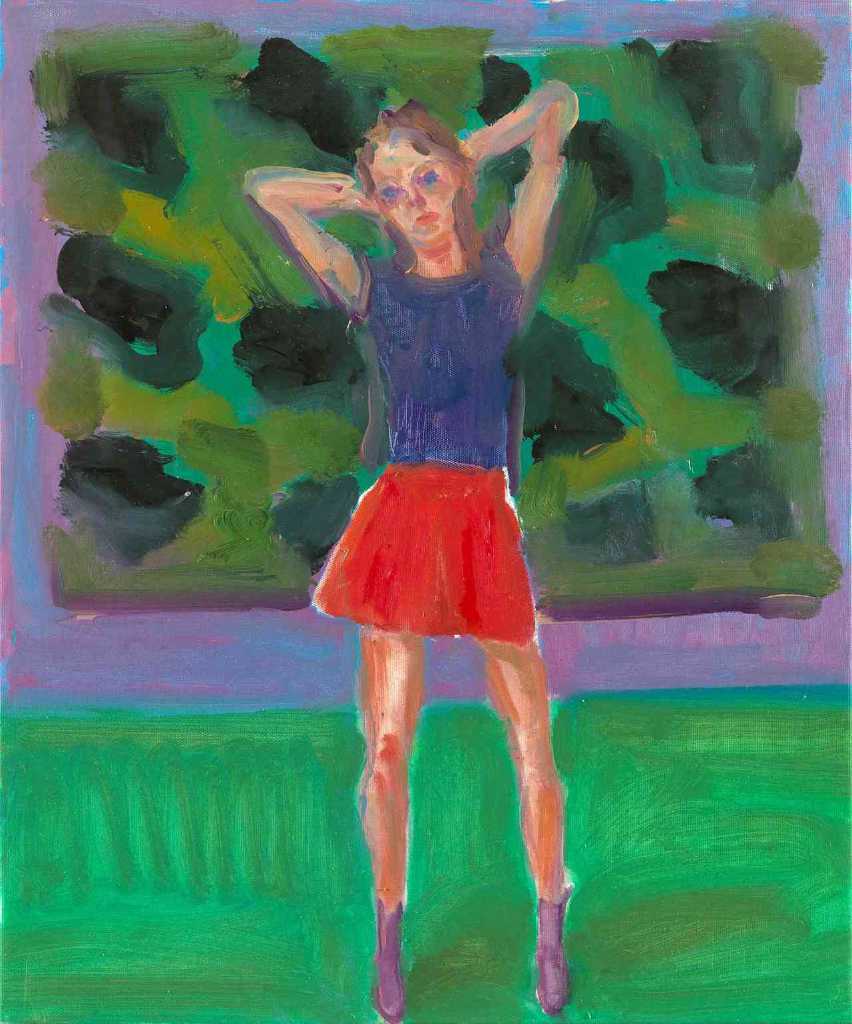
Giorgos Hadoulis,
Red skirt,
oil on canvas,
60x50 cm,
2018
The word ‘Antidote’ was the first word that Maria Almpani and I thought of when selecting these four artists. What can one do to stop the destruction of nature and the annihilation of its truth? The truth of art, which can manifest itself in dreaming, in love, in the joy of a surprise and the innocence of truth
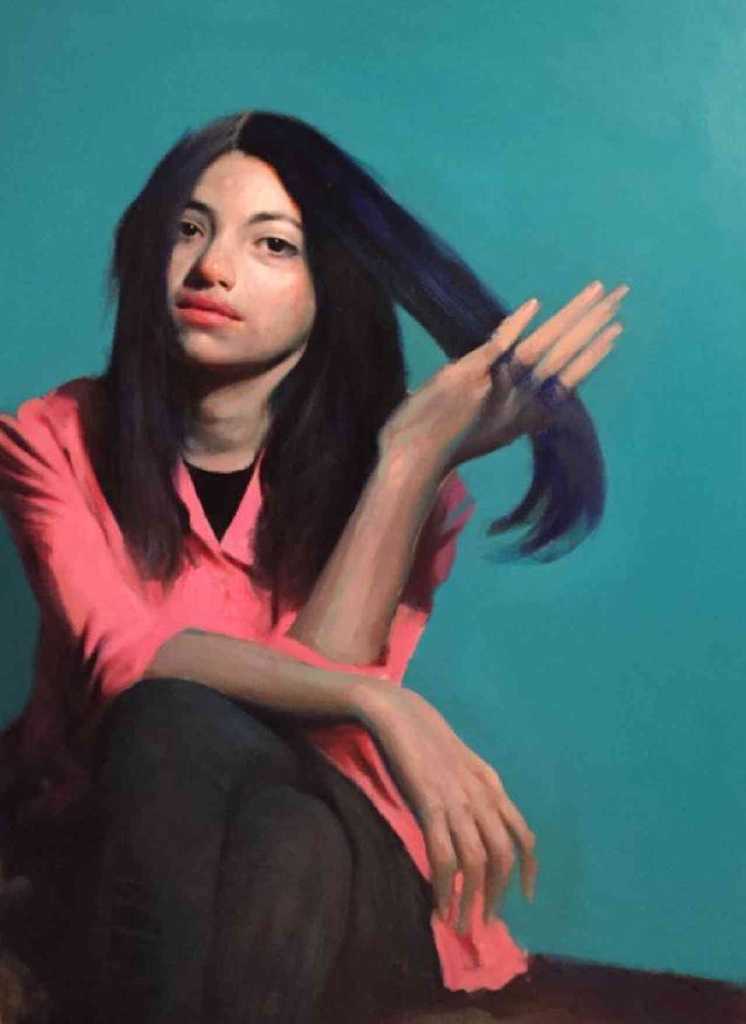
Savvas Georgiades,
Loukia,
oil on canvas,
80x110 cm,
2019
This is what, we believe, links the art of John, Valli, George and Savvas. Their work reminds us of our childhood. As Rilke wrote (about Roden in 1907), ‘Memories, older than us, awaken us. We need to rebuild relationships and renew the bonds that existed long before us.’
The beauty of Nature is the only antidote to human tragedy. Sadly, it cannot be constructed, and nothing man-made will ever compare to its ungoverned harmony or its hedonic insouciance. However, with a little luck, the human mind can sometimes grasp the innocence of youth. Only through those hungry, childish eyes can we make sense of the beginning of time and the tirelessness of nature’s continual rebirth through its ashes.
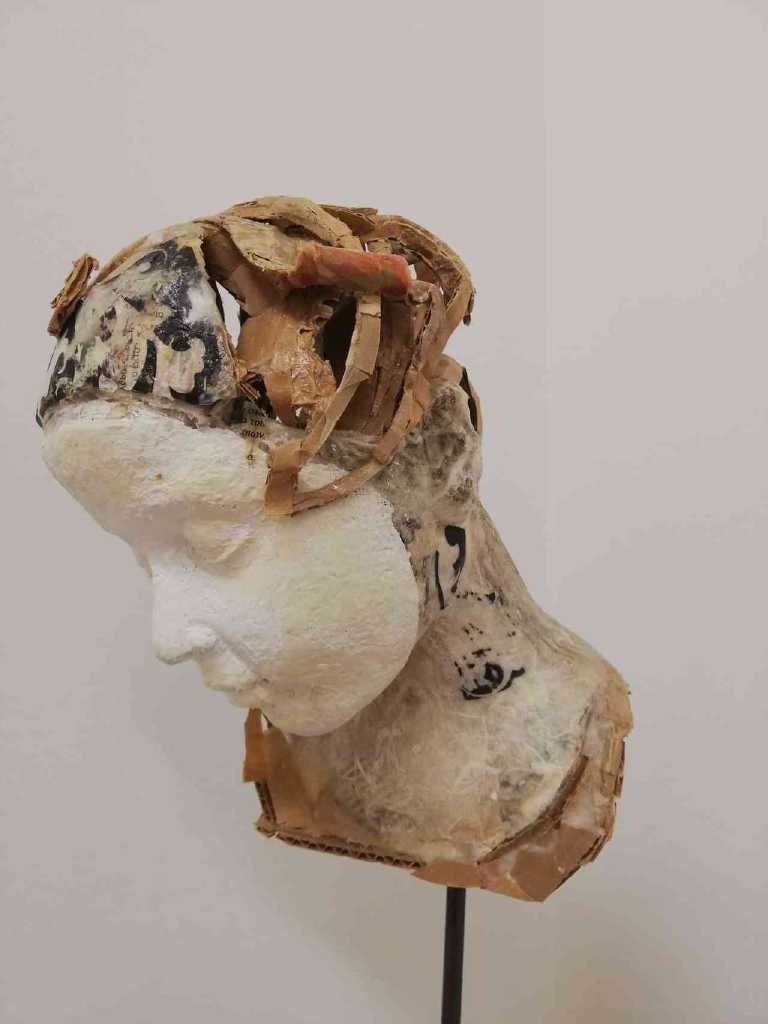
Valli Nomidou,
Face with mask,
20.5x25x29 cm, mixed media
This childish nostalgia for a long lost Eden is transparent in the work by these four artists, our friends, who all consciously express the pain of the tragic deterioration of matter. Seen through the prism of art, this deterioration of matter seems to be claiming a small part of eternity.
“Then, O my beauty! Say to the worms As it devours you with kisses, That I have kept the form and the divine essence Of my decomposed love…”
Charles Baudelaire, “A Carrion” from “The Flowers of Evil”
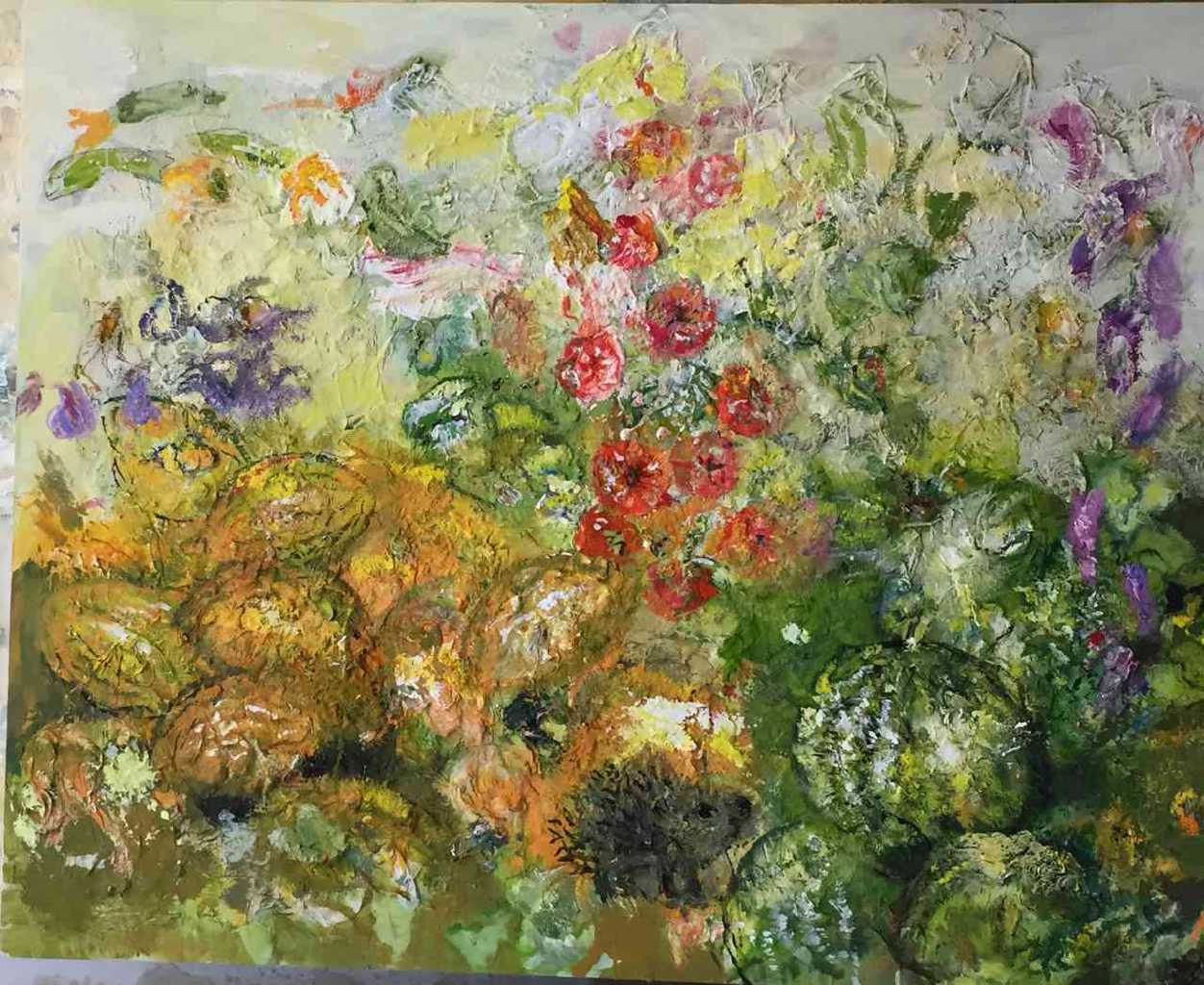
Giannis Kottis,
Still life,
oil on canvas,
130x160 cm,
2019
In the work of Kottis, the carelessness of youth is seen sliding through a bright universe filled with the scent of primroses. Elsewhere, the fruits of a ‘lost paradise’ dance ecstatically throughout the canvas. Kottis’s script comprises of overlapping layers of acrylic paint and ‘explosive’ pastels, that give shape to mystic figures and earthly shades, that appear to sink back and forth on the canvas. His work unearths vivid objects of desire from our memories.
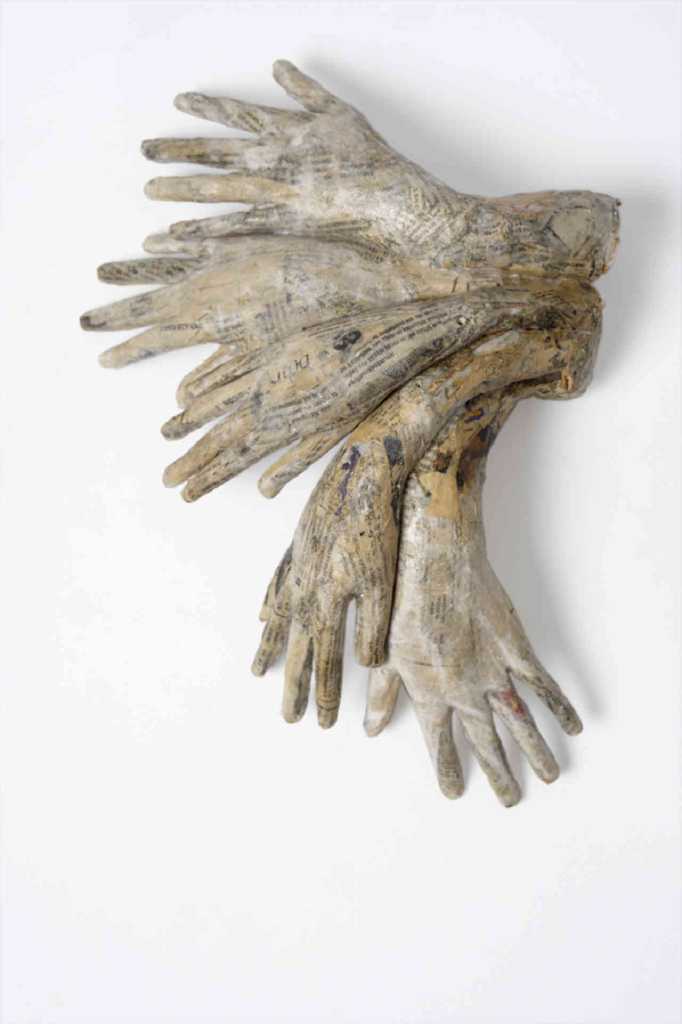
Valli Nomidou,
Flower Hands,
39x28x9 cm,
mixed media
In the work of Valli Nomidou, multiple protective arms spring from the same stem, forming a semicircular, shielding orbit around a womb. Her work speaks of the tenderness of youth and the inviting touch of love. Her canvases are clear of any unnecessary details, and this brings out the strong contrast between the temporal omnipotence of youth and the inevitable decay of the flesh. Multiple translucent layers of milky paint remind us of human flesh, which breaks up into pieces like recyclable material. In Valli’s work, the arrogance on youth is a constant reminder of the inevitability of death.

Giorgos Hadoulis,
Birthday Skirt,
oil on canvas,
60x50 cm,
2018
Contrary to the work of Kottis and Nomidou, George Hadoulis focuses on a different aspect of youth, the ‘easy going’ attitude of lazy, naked young girls on the eve of a celebration or upon their return from a night of fun. His canvases, almost as if possessing an internal light source, are reminiscent of lit screens. The complete absence of cast shadows enriches his forms with a phantasmic, unearthly substance, in a yet soothing and sensual environment. His harsh brushstrokes make the figures pulsate in fear of extinction; in an endless search for indestructibility.

Savvas Georgiades,
Eleni,
oil on canvas,
100x100 cm,
2019
Savvas Georgiades’s larger than life portraits, confront us with overwhelming faces that stare down at us. We are immobilized at the sight of endless melancholy and unsatisfied desire. We become one with the face on the canvas, and this merging generates a new ‘persona’ that resides in the transcendent space pop culture aesthetic. The eyes and the reflections on the glossy canvas surfaces are captured with eerie realism.
The element that connects these four artists is not only the unmistakable sincerity with which they view the world around them, but also the manner in which they use paint to depict it on canvas.
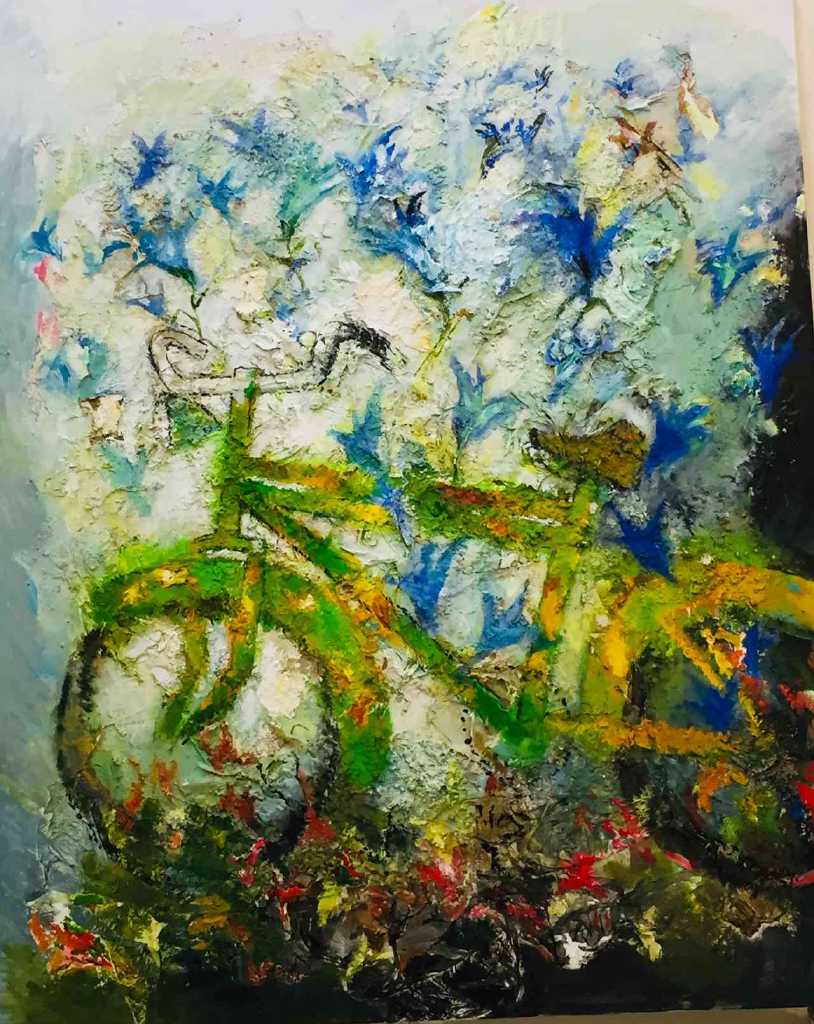
Giannis Kottis,
Bike with flowers,
oil on canvas,
160 x 130 cm,
2019

Giorgos Hadoulis,
Christmas,
oil on canvas,
140x190 cm,
2019
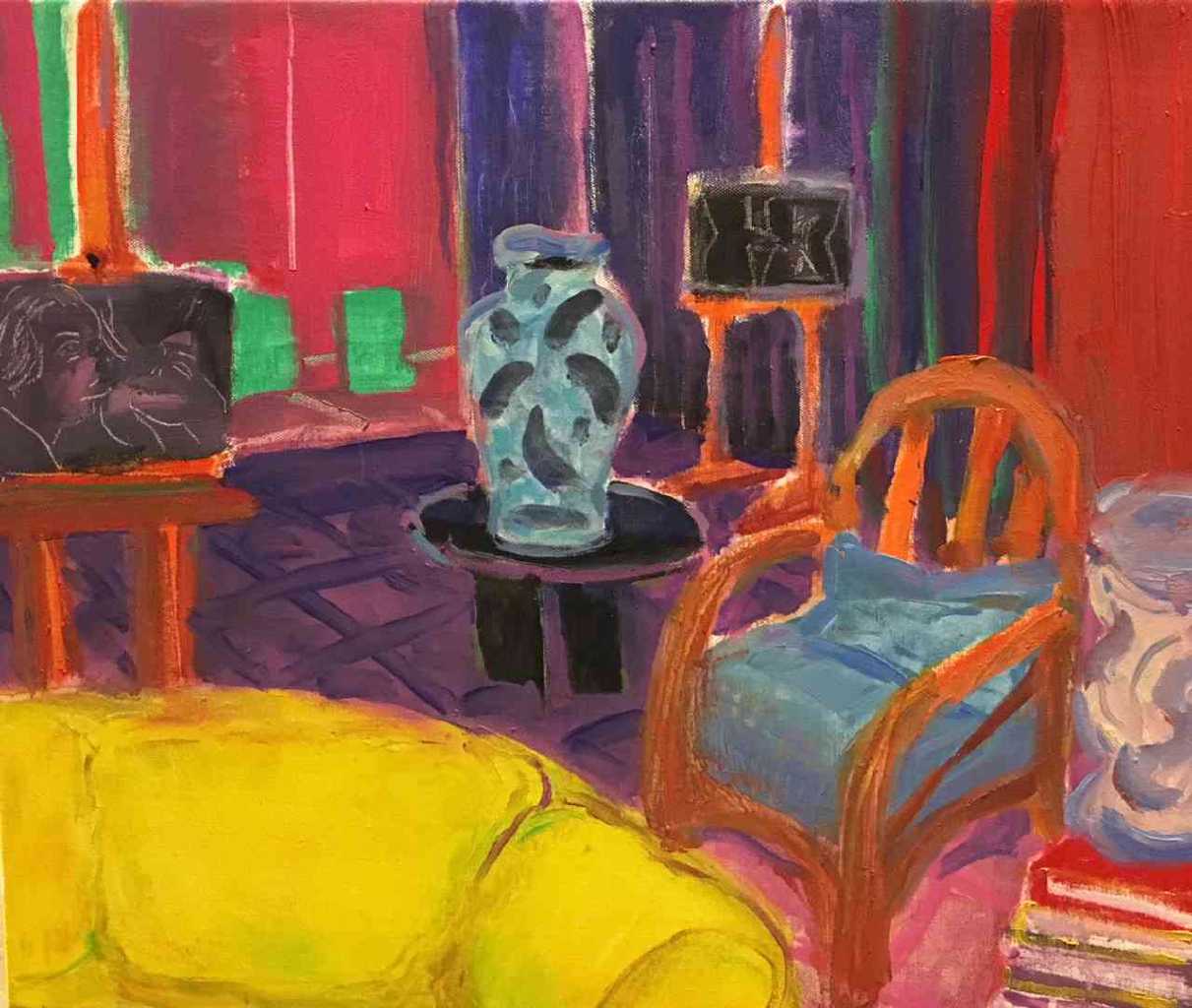
Giorgos Hadoulis,
Kiss,
oil on canvas,
50x60 cm,
2017
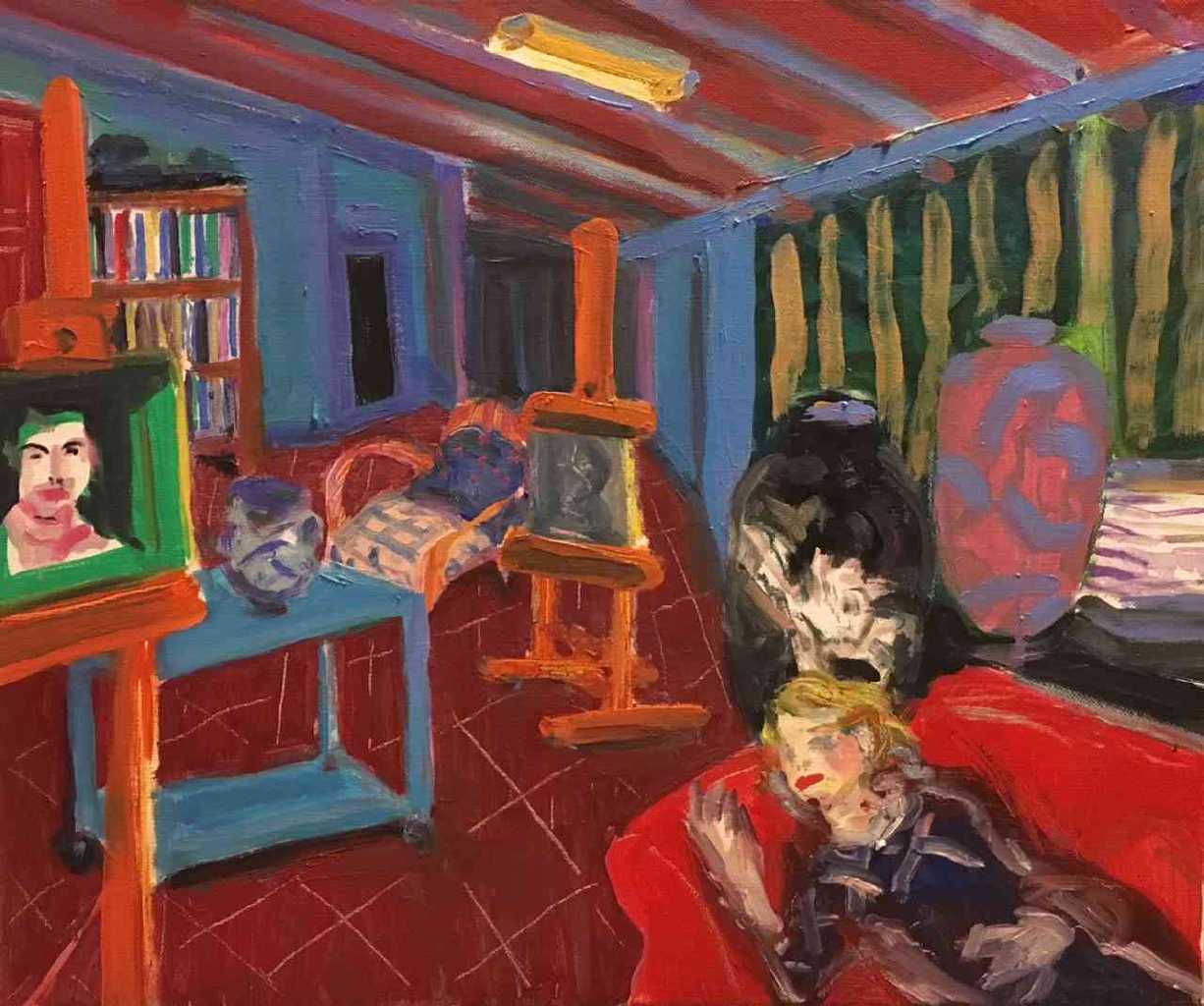
Giorgos Hadoulis,
The studio,
oil on canvas,
120x90 cm,
2016

Giorgos Hadoulis,
Untitled,
oil on canvas,
50x60 cm,
2017
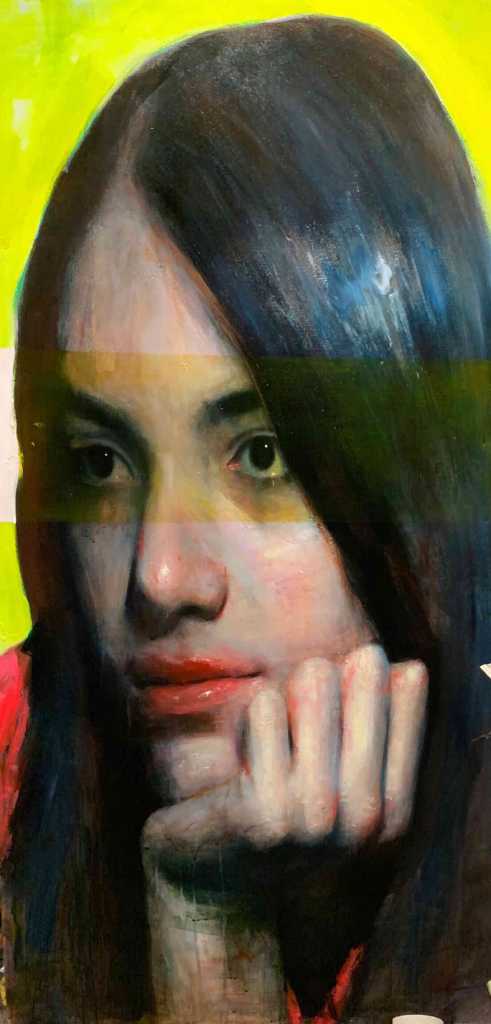
Savvas Georgiades,
Loukia,
oil on canvas,
152x80 cm,
2019
